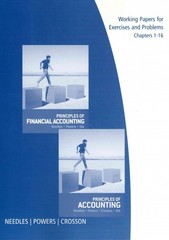Exhibits are shown below questions
1.Using your judgment, identify time periods of similar characteristics and classify them using the following life cycle terms: introduction, growth, maturity, or decline (see Exhibit 10 for definitions).
For each period labeled, provide support for your classification. Specifically discuss the patterns observed (e.g., in revenue, income, operating cash flow, investing cash flow, and financing cash flow) and how they indicate where Amazon.com is in the life cycle.
2.Comment on the general trend in total investment in Exhibit 3 (cash and stock) over time (excluding marketable securities). Provide possible explanations for the variation observed.
EXHIBIT 10 Descriptions of Life Cycle Stages . Introduction is characterized by small firms in the midst of defining their product, strategy, and market. Firms in this stage are typically unprofitable, have low revenues, and require continued funding to remain viable. . Growth is characterized by firms that emerge from introduction with a defined product and strategy, and growing market share. The focus is more on continued product development and increasing market share, and less on efficiency. Revenue growth is exponential, but the firm is likely unprofitable and still requires funding for daily operations and capital investment. . Maturity is characterized by firms that have refined their product, developed their strategy, and established stable revenues and market share. Firms have reached profitability and generate enough cash flow to fund capital investment, repay debt, and possibly begin paying dividends to shareholders. Firms begin to focus more on efficiency. . Decline is characterized by firms producing goods or providing services for which demand is decreasing, often using outdated technology. Revenues begin to decline, and investment is significantly reduced.EXHIBIT 3 Selected Investment Information from 1995-2010 Net Change Components of CAPEX: Year CFI Securities CAPEX Internal R&D Acquisitions Stock Issued 1995 ($52) $0 ($52) ($52) $0 $1,122 1996 (1,214) 0 (1,214) (1,214) 0 36 1997 (22,477) (15,256) (7,221) (7,221) 0 50,603 1998 (261,777) (214,425) (47,352) (28,333) (19,019) 225,624 1999 (951,959) (295,297) (656,662) (287,055) (369,607) 743,274 2000 163,978 361,269 (197,291) (134,758) (62,533) 30,985 2001 (253,294) (196,775) (56,519) (50,321) (6,198) 98,806 2002 (121,684) (82,521) (39,163) (39,163) 0 2003 236,651 277.542 (40,891) (45,963) 5,072 2004 (317,631) (157,303) (160,328) (89,328) (71,000) 2005 (778,000) (550,000) (228,000) (204,000) (24,000) 2006 (333,000) (85,000) (248,000) (216,000) (32,000) 2007 42,000 341,000 (299,000) (224,000) (75,000) 2008 (1,199,000) (372,000) (827,000) (333,000) (494,000) 2009 (2,337,000) (1,924,000) (413,000) (373,000) (40,000) 1,145,000 2010 (3,360,000) (2,029,000) (1,331,000) (979,000) (352,000) 0EXHIBIT 1 Selected Financial Information from 1995-2010 Year Revenue COGS Income CFO CFI CFF 1995 $511 $409 ($303) ($232) ($52) $1,228 1996 15,746 12,287 (5,777) (1,735) (1,214) 8,201 1997 147,758 118,945 (27,590) 3,522 (22,477) 122,517 1998 609,996 476,155 (124,546) 31,035 (261,777) 254,462 1999 1,639,839 1,349,194 (719,968) (90,875) (951,959) 1,104,071 2000 2,761,983 2,106,206 (1,411,273) (130,442) 163,978 693,147 2001 3,122,433 2,323,875 (567,277) (119,782) (253,294) 106,881 2002 3,932,936 2,940,318 (149,132) 174,291 (121,684) 106,894 2003 5,263,699 4,006,531 35,282 392,022 236,651 (331,986) 2004 6,921,124 5,319,000 588,451 566,560 (317,631) (97.292) 2005 8,490,000 6,451,000 359,000 733,000 (778,000) (193,000) 2006 10,711,000 8,255,000 190,000 702,000 (333,000) (400,000) 2007 14,835,000 11,482,000 476,000 1,405,000 42,000 50,000 2008 19,166,000 14,896,000 645,000 1,697,000 (1,199,000) (198,000) 2009 24,509,000 18,978,000 902,000 3,293,000 (2,337,000) (280,000) 2010 34,204,000 26,561,000 1,152,000 3,495,000 (3,360,000) 181,000 Dollar amounts in thousands. The financial statement elements include net revenue (Revenue); Cost of Goods Sold (COGS); net income (Income); and cash from operating (CFO), investing (CFD), and financing activities (CFF)









